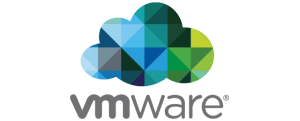
VMware Pulse IoT Center 2.0 features tools for the management of IoT/Edge devices throughout their life cycles.
VMware has launched VMware Pulse IoT Center 2.0. The company updated its edge infrastructure and IoT device lifecycle management platform with all new life cycle management tools for IoT/Edge devices, sensors, and applications. These upgrades will simplify and secure device registration and on-boarding.
IT and operational technology organizations can use Pulse IoT Center. It allows companies to:
- Automate management at scale
- Increase and extend security
- Optimize collected data
See also: VMware expands IoT edge offering
Challenges Facing Edge and IoT Technology
While their popularity continues to grow, Edge and IoT do present certain challenges which some find significant. Those challenges include how to securely connect to and gather data from multiple sources/ devices.
Current methods can create inefficient isolated IoT silos, which tend to increase the gap between OT and IoT. VMWare designed its new Pulse IoT Center to help mitigate those challenges.
Key Features of Pulse IoT Center
- SaaS support: VMware will host Pulse IoT Center 2.0, available as SaaS. VMware’s cloud provider partners will provide hosting later in 2019.
- Low-touch device fleet on-boarding: Minimal touch enrollment, bulk on-boarding, and device templates reduce the time and complexity for getting started with IoT.
- More secure device enrollment: Users receive unique device token IDs or certificates to register and connect their devices. The system also collects common device system properties and metrics during the initial onboarding.
- Advanced system management: A single management console provides visibility across heterogenous IoT and Edge devices at scale. This format enables users to manage millions of devices. The system also supports more secure remote troubleshooting.
- Enhanced over-the-air (OTA) updates: Firmware/ software has granular control and update management, including scheduling, approvals, activation, and installation progress. A wizard-based setup enables rapid configuration and update deployments.
- Container management: The system sends provision and issue commands to containers running on compatible edge compute devices and gateways.
- Rich alerts and notifications: Users can set alerts for groups of managed objects and issue notifications via email or to 3rd parties via REST API. Users can also set symptom-based alerts on devices with metrics thresholds. The platform supports service offline alerts and device offline metrics and batch collection.
- Bridge the IT – OT gap: The system supports OT operations with robust monitoring and alerting across all IoT devices. It uses a single management platform to support IT requirements for security and control.
More details on new features can be found here.




























